The Institut d'Astronomie et d'Astrophysique in the media
[20/05/2022] When the interests of private companies jeopardize astronomical science ... and humanity
Press Release of the Belgian National Astronomy Committee
[13/05/2022] Four-Star Merry-Go-Round 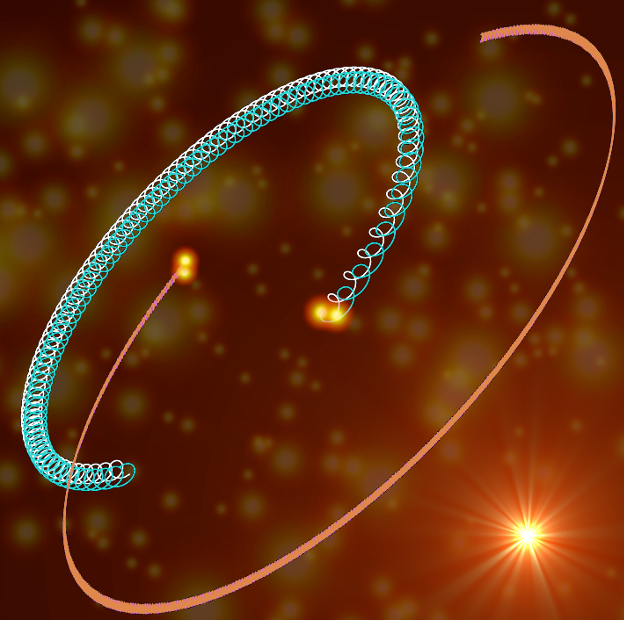
A spectroscopic quadruple as a possible progenitor of sub-Chandrasekhar type Ia supernovae, Nature Astronomy, Thibault Merle et al.
- altmetric
- Canterbury (New Zealand) National Tribune
- phys.org
- trueviralnews.com
- Universe Today
- myscience.be
- Daily Science (30/05/2022)
[22/11/2021] Succès scientifiques et images époustouflantes : l’héritage du télescope spatial Hubble The Conversation, Alain Jorissen & Thibault Merle
[08/06/2021] Ana Escorza receives the Spanish Society of Astronomy Thesis Award 2021
The Spanish Society of Astronomy (SEA) has just announced the winners of the Thesis Awards 2021,
which recognize the doctoral theses with the greatest present and future impact, both in astronomy research and in the area of instrumentation, computing and technological development in astronomy.
The SEA Thesis 2021 Prize in Astronomy and Astrophysics has been awarded to Ana Escorza, for the
thesis “Barium stars as tracers of binary evolution in the Gaia era”, carried out at the KU Leuven and the Université Libre de Brussels (ULB) and supervised by Prof. Hans Van Winckel and Dr. Lionel Siess. The awards ceremony will be held at the opening ceremony of the next Scientific Meeting of the Spanish Society of Astronomy, in La Laguna in September 2022.
Ana Escorza graduated in Physics from the University of Zaragoza, studying for a year at the University of Southampton. She completed the Master in Astronomy and Astrophysics at the KU Leuven and from 2016 to 2020 she has been a PhD student of the Research Foundations Flanders (FWO). Her doctoral thesis studies a family of stars with chemical peculiarities called "barium stars". Using broadband photometry, high-resolution spectroscopy, results from the Gaia mission and state-of -the-art evolution models, she has been able to determine the properties of these stars with unprecedented accuracy. She also has built the largest catalog of barium dwarf systems published to date. She currently has a postdoctoral position as a Fellow of the European Southern Observatory (ESO) in Santiago de Chile,
where she is an instrument fellow for the UVES and ESPRESSO spectrographs, mounted on the Very
Large Telescope at ESO's Cerro Paranal Observatory.
- [06/05/2021] Dim and dimmer Betelgeuse
A report in Nature Astronomy by Chiao May of our A&A Letter (Kravchenko et al.) on the possible cause of the dimming of Betelgeuse: preprint here
- [25/04/2018]
Gaia Data Release 2
ULB astronomers contribute to ESA's Gaia astrometric mission, which released data for 1.4 billion stars today.
- [12/04/2018]
Sophie Van Eck, the Belgian star huntress
Astrophysicist working at ULB, formerly research associate of the Fund for Scientific Research (FRS-FNRS), Sophie Van Eck contributed to the imaging of
pi Gruis, a giant star located 530 pc away in the southern constellation Gruis, using European Southern Observatory Very Large Telescope Interferometer.
- [22/12/2017] Giant Bubbles on Red Giant Star’s Surface
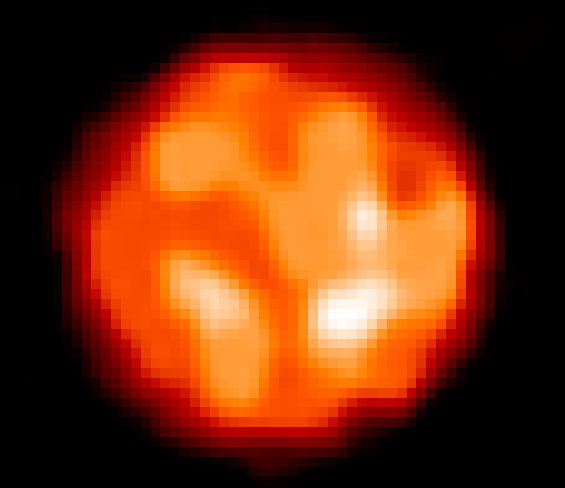
Astronomers using ESO’s Very Large Telescope have for the first time directly observed granulation patterns on the surface of a star outside the Solar System — the ageing red giant π1 Gruis. This remarkable new image from the PIONIER instrument reveals the convective cells that make up the surface of this huge star, which has 350 times the diameter of the Sun. Each cell covers more than a quarter of the star’s diameter and measures about 120 million kilometres across. These new results are being published this week in the journal Nature.
Located 530 light-years from Earth in the constellation of Grus (The Crane), π1 Gruis is a cool red giant. It has about the same mass as our Sun, but is 350 times larger and several thousand times as bright. Our Sun will swell to become a similar red giant star in about five billion years.
An international team of astronomers led by Claudia Paladini (ESO) used the PIONIER instrument on ESO’s Very Large Telescope to observe π1 Gruis in greater detail than ever before. They found that the surface of this red giant has just a few convective cells, or granules, that are each about 120 million kilometres across — about a quarter of the star’s diameter. Just one of these granules would extend from the Sun to beyond Venus. The surfaces — known as photospheres — of many giant stars are obscured by dust, which hinders observations. However, in the case of π1 Gruis, although dust is present far from the star, it does not have a significant effect on the new infrared observations.
When π1 Gruis ran out of hydrogen to burn long ago, this ancient star ceased the first stage of its nuclear fusion programme. It shrank as it ran out of energy, causing it to heat up to over 100 million degrees. These extreme temperatures fueled the star’s next phase as it began to fuse helium into heavier atoms such as carbon and oxygen. This intensely hot core then expelled the star’s outer layers, causing it to balloon to hundreds of times larger than its original size. The star we see today is a variable red giant. Until now, the surface of one of these stars has never before been imaged in detail.
By comparison, the Sun’s photosphere contains about two million convective cells, with typical diameters of just 1500 kilometres. The vast size differences in the convective cells of these two stars can be explained in part by their varying surface gravities. π1 Gruis is just 1.5 times the mass of the Sun but much larger, resulting in a much lower surface gravity and just a few, extremely large, granules.
While stars more massive than eight solar masses end their lives in dramatic supernovae explosions, less massive stars like this one gradually expel their outer layers, resulting in beautiful planetary nebulae. Previous studies of π1 Gruis found a shell of material 0.9 light-years away from the central star, thought to have been ejected around 20 000 years ago. This relatively short period in a star's life lasts just a few tens of thousands of years – compared to the overall lifetime of several billion – and these observations reveal a new method for probing this fleeting red giant phase.
- [20/10/2017] Cosmic Crashes Forging Gold: ULB and Max Planck Institute astrophysicists did predict it back in 2011!
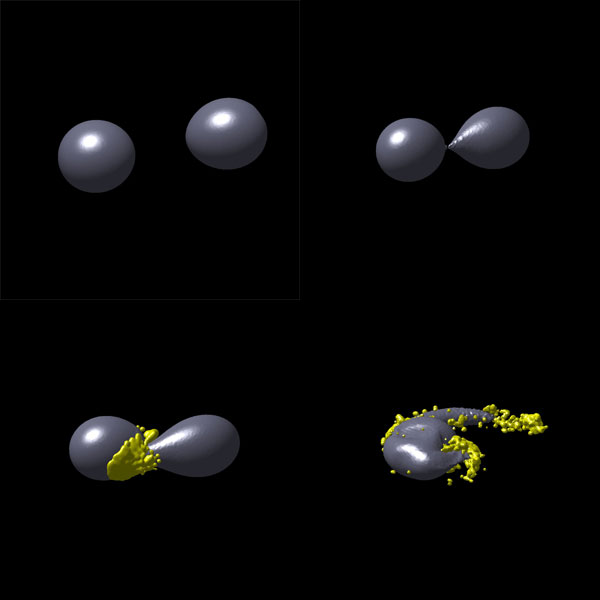
The observation, made public on October 16 2017, that neutron-star mergers emit gravitational waves and visible light with signatures of heavy elements validates a prediction made by scientists of the Max Planck Institute for Astrophysics (MPA) and of the Free University of Brussels (ULB) back in 2011. They had identified that ejected matter from neutron stars merging in a violent collision provides ideal conditions to produce the heaviest chemical elements such as lead or gold.
- [20/09/2017] Ageing Star Blows Off Smoky Bubble
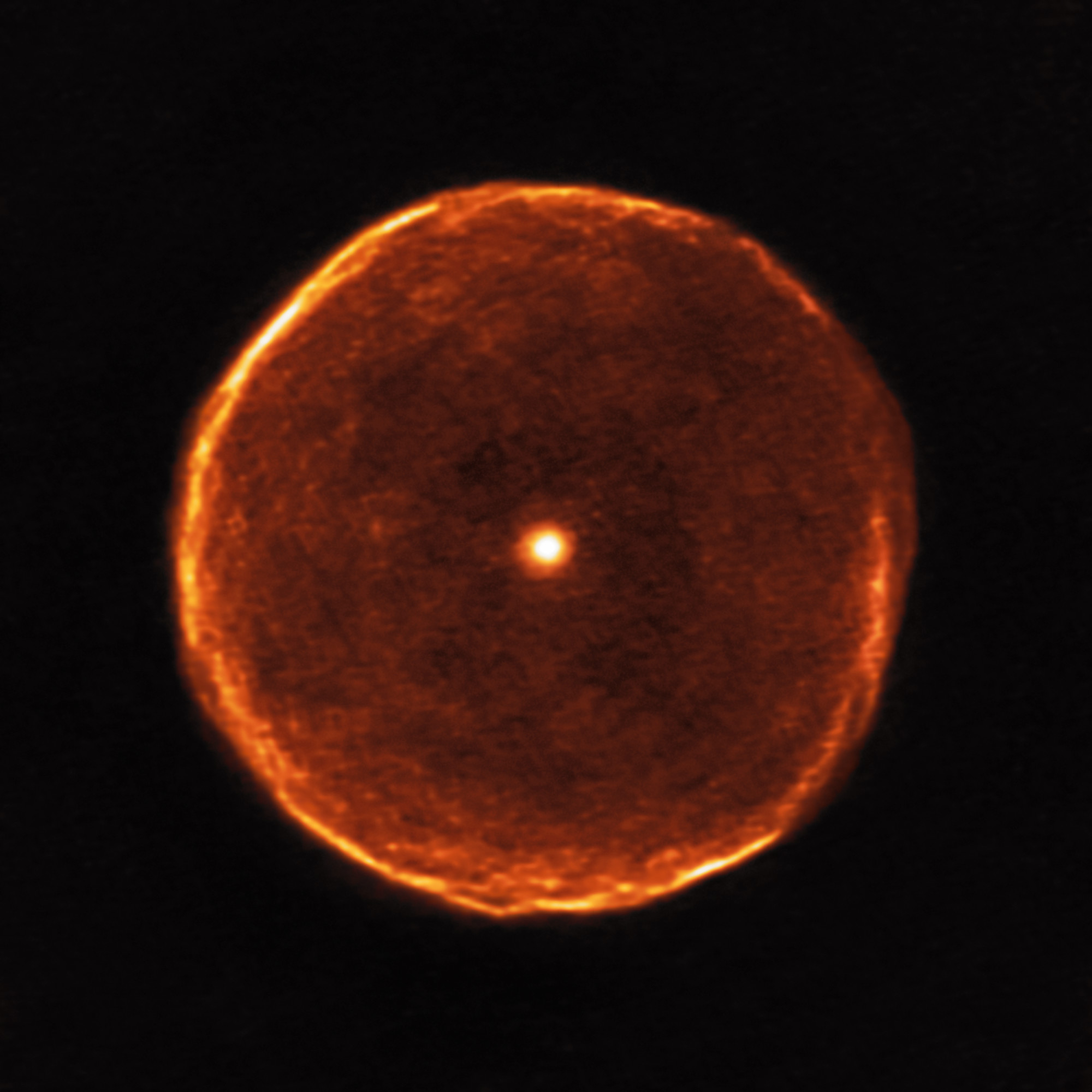
Astronomers have used the ALMA radio telescope array to capture a strikingly beautiful view of a delicate bubble of expelled material around the exotic red star U Antliae. These observations will help astronomers to better understand how stars evolve during the later stages of their life-cycles.
In the faint southern constellation of Antlia (The Air Pump) the careful observer with binoculars will spot a very red star, which varies slightly in brightness from week to week. This very unusual star is called U Antliae and new observations with the Atacama Large Millimeter/submillimeter Array (ALMA) are revealing a remarkably thin spherical shell around it.
This research was presented in a paper entitled “Rings and filaments. The remarkable detached CO shell of U Antliae”, by F. Kerschbaum et al., to appear in the journal Astronomy & Astrophysics. The team includes C. Paladini (Université Libre de Bruxelles, Belgium).
[12/08/2020] La conquête spatiale, un enjeu géopolitique? Mag international, LN24 (Alain Jorissen)
[27/05/2020] About SpaceX and Starlink Le grand débat, LN24 (Alain Jorissen)
[21/05/2019] Alain Jorissen, Pint of Science
Festival Pint of Science in Brussels, about Gaia, the billion-star surveyor, live on Facebook
[12/04/2018] Sophie van Eck, la chasseuse belge d’étoiles
Astrophysicienne à l’ULB où elle enseigne actuellement à la faculté des sciences et anciennement chercheuse qualifiée FNRS pendant 20 ans, Sophie Van Eck a participé à une découverte capitale concernant une étoile géante située à 530 années lumière de notre planète, dans la Constellation de la Grue. Elle a eu le privilège d’avoir accès aux télescopes de l’Observatoire Européen Austral au Chili.
[23/2/2017] Comment on the 7-planets discovery
[12/1/2016] Parallax and masses of alpha Centauri revisited
- Le Vif, January 12, 2016
- Daily Science, January 12, 2016
- Preprint of the paper to appear in Astronomy & Astrophysics
[8/1/2015] The temperature and chronology of heavy-element synthesis in low-mass stars
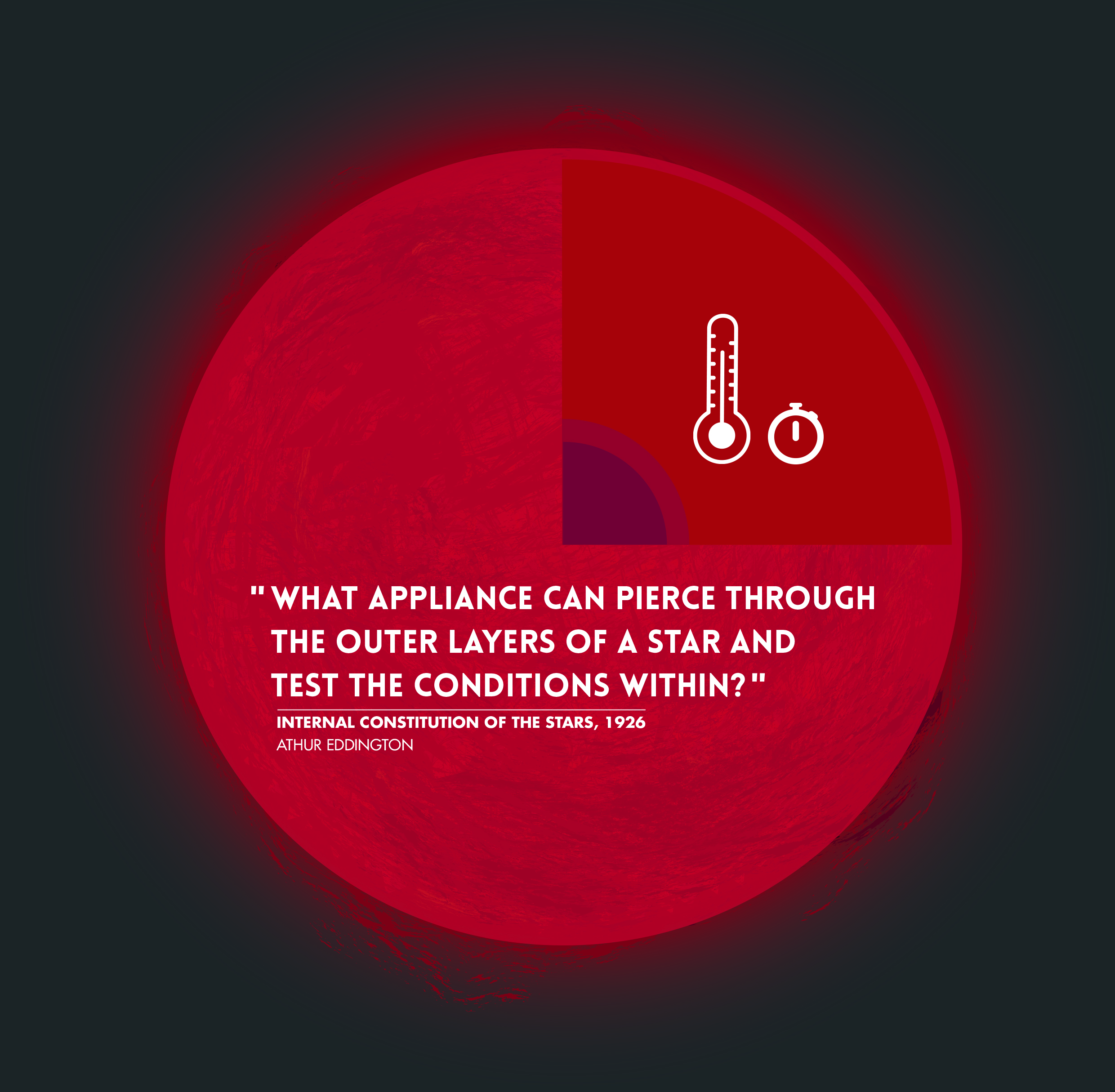
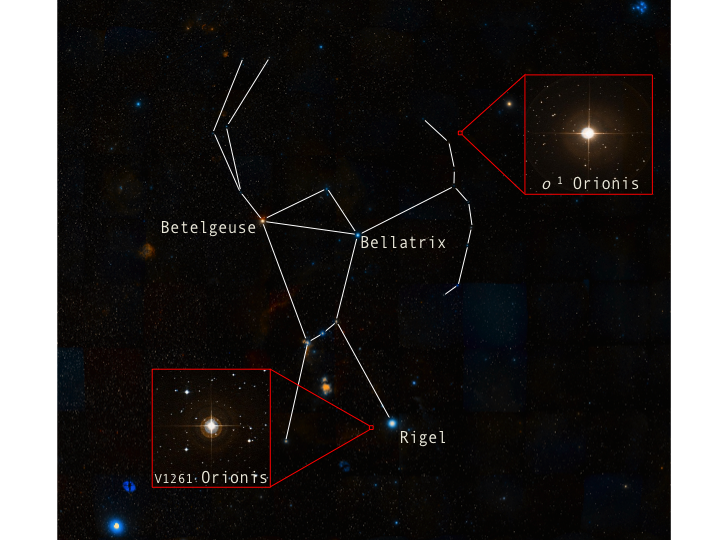
- La Libre Belgique, 8 janvier 2015
- Dossier La Libre Belgique, 8 janvier 2015
- Daily science
- Le Soir, 10 janvier 2015
- L'Avenir
- RTL Info
- 7 sur 7
- phys.org
- De Standaard
- Science Daily
- RTBF
- Brussels times
- De redactie.be (VRT)
- La Dernière Heure
- Panorama News
- Metro
- cubiclane
- Municipio Sur (Mexico)
- Publico.es (Madrid)
[24/11/2014] Seeing into the Heart of Mira A and its Partner
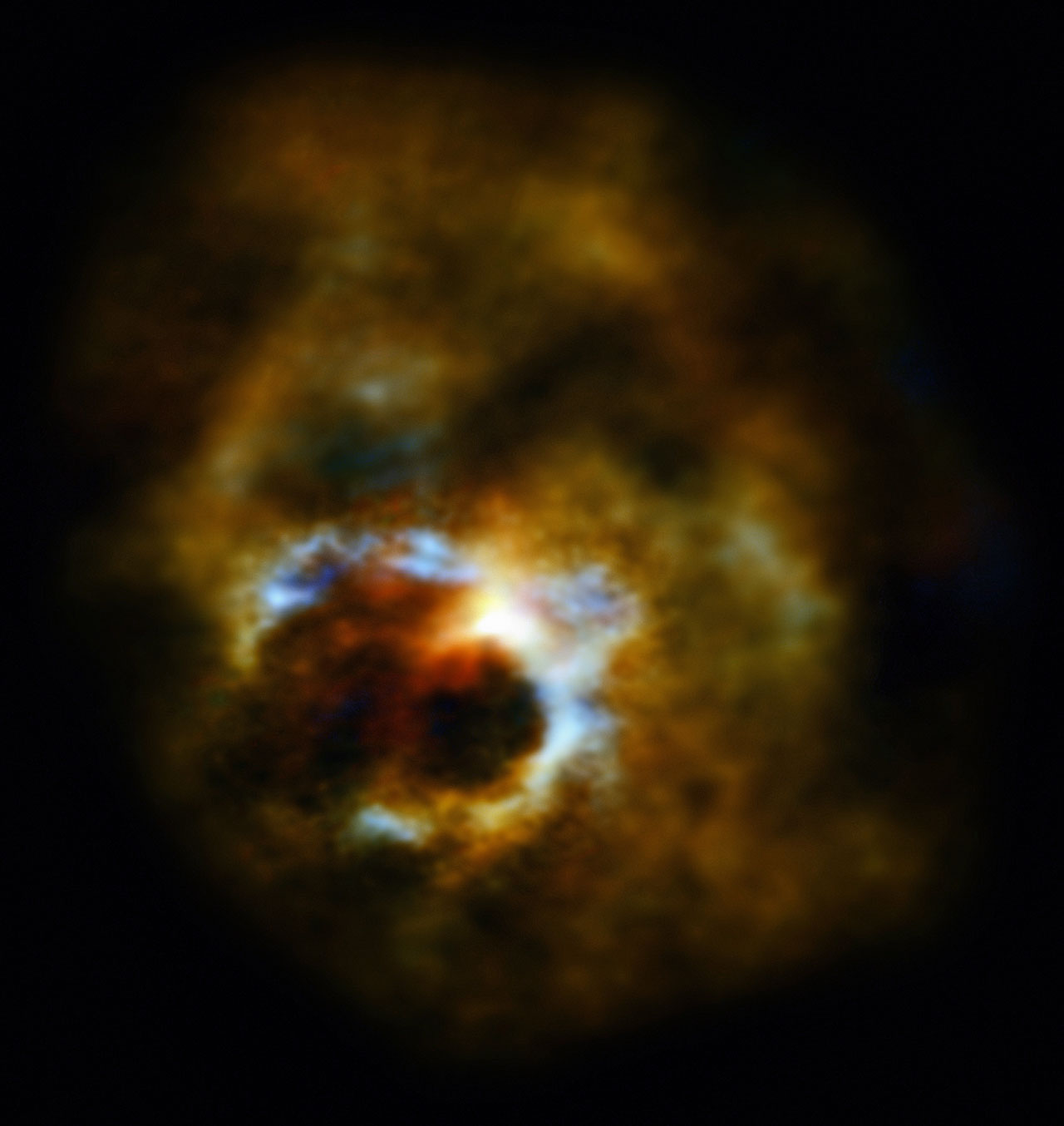
Mira A is an old star, already starting to throw out the products of its life’s work into space for recycling. Mira A’s companion, known as Mira B, orbits it at twice the distance from the Sun to Neptune.
Mira A is known to have a slow wind which gently moulds the surrounding material. ALMA has now confirmed that Mira’s companion is a very different kind of star, with a very different wind. Mira B is a hot, dense white dwarf with a fierce and fast stellar wind.
New observations show how the winds from the two stars have created a fascinating, beautiful and complex nebula. The remarkable heart-shaped bubble at the centre is created by Mira B’s energetic wind inside Mira A’s more relaxed outflow. The heart, which formed some time in the last 400 years or so, and the rest of the gas surrounding the pair show that they have long been building this strange and beautiful environment together.
By looking at stars like Mira A and Mira B scientists hope to discover how our galaxy’s double stars differ from single stars in how they give back what they have created to the Milky Way’s stellar ecosystem. Despite their distance from one another, Mira A and its companion have had a strong effect on one another and demonstrate how double stars can influence their environments and leave clues for scientists to decipher.
Other old and dying stars also have bizarre surroundings, as astronomers have seen using both ALMA and other telescopes. But it’s not always clear whether the stars are single, like the Sun, or double, like Mira. Mira A, its mysterious partner and their heart-shaped bubble are all part of this story.
The new observations of Mira A and its partner are presented in this paper published in the European Journal Astronomy & Astrophysics, including authors A. Jorissen and C. Paladini from IAA-ULB.
They complement the previous study made by the same team with the Herschel satellite.
Credit:
ESO/S. Ramstedt (Uppsala University, Sweden) & W. Vlemmings (Chalmers University of Technology, Sweden)
[1/6/2011] A cosmic firewheel blown by the wind
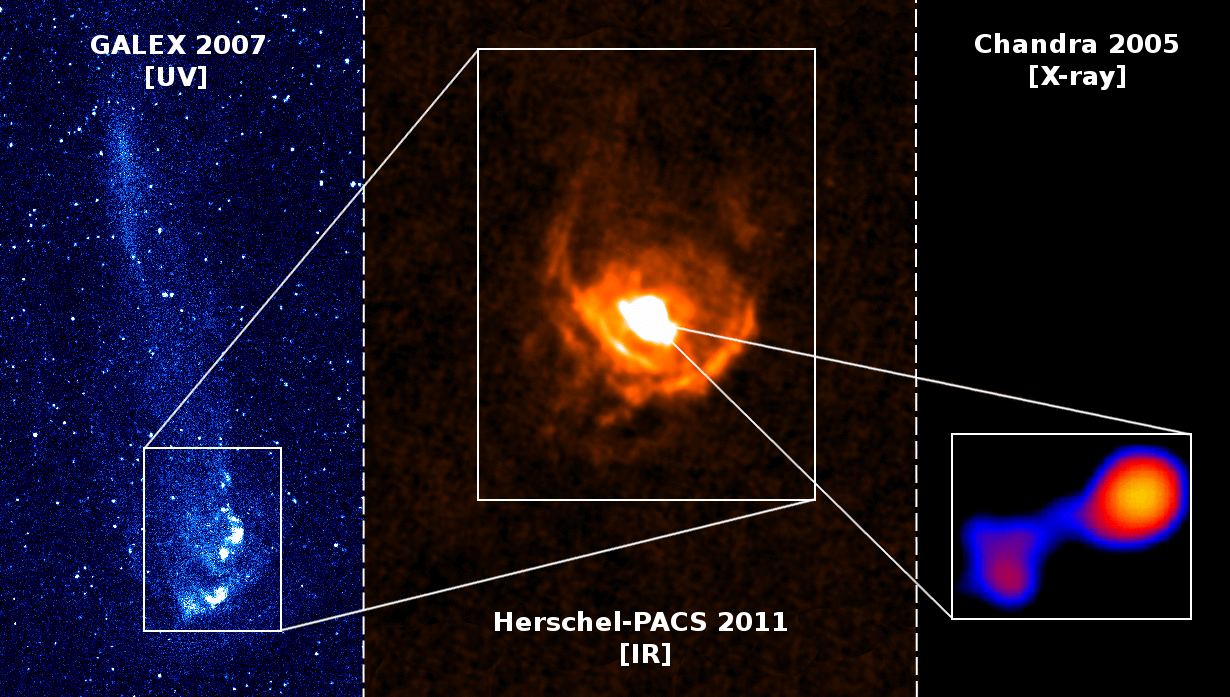
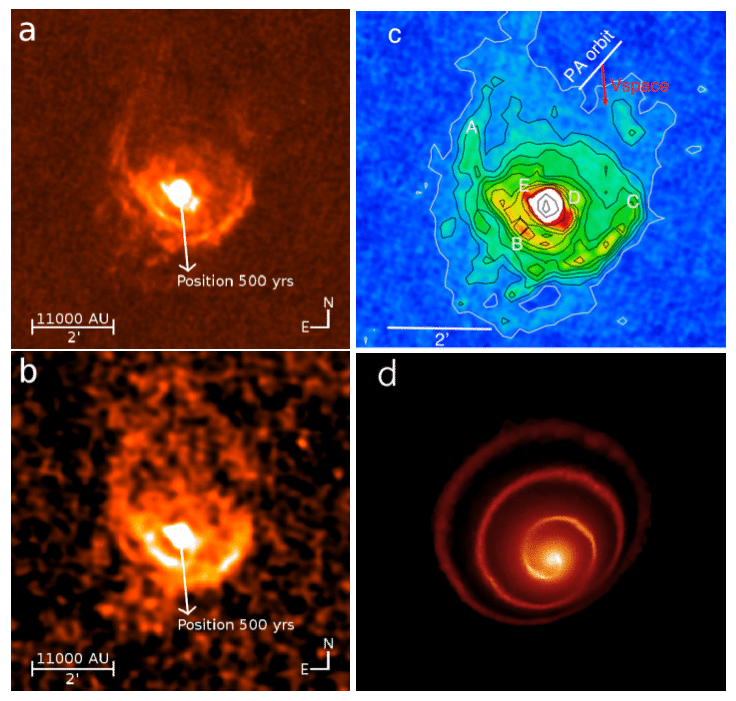
Astronomy & Astrophysics Letter, 2011, 531, L4
Panel (a): Deconvolved PACS/Herschel image at 70 µm. The arrow indicates the space motion and the position in 500 yrs; (b) is the same for the 160 µm band and (c) is the 70 µm deconvolved PACS image with contours and arcs labelled as A, B, C, D and E. The lowest contour is the 3σ threshold (and is depicted in white), the arrow labelled with Vspace shows the direction of the space motion, the bar labelled PA orbit gives the orientation of the major axis of the apparent orbit, orthogonal to the node line. Panel (d) results from a paraboloidal cut (representing the bow shock at the wind - ISM interface) in Mira hydrodynamical simulations of Mohamed & Podsiadlowski (2007, 2011).
[24/1/2013] Plumbing Neutron Stars to New Depths
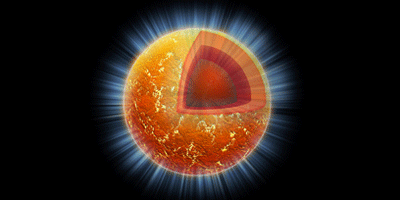
- CERN courier
- Science news
- IdW
- APS Physics Synopsis
- "Plumbing Neutron Stars to New Depths with the Binding Energy of the Exotic Nuclide 82Zn", 2013 Phys. Rev. Lett. 110, 041101
[2/1/2013] "Glitch" in Pulsar's Models
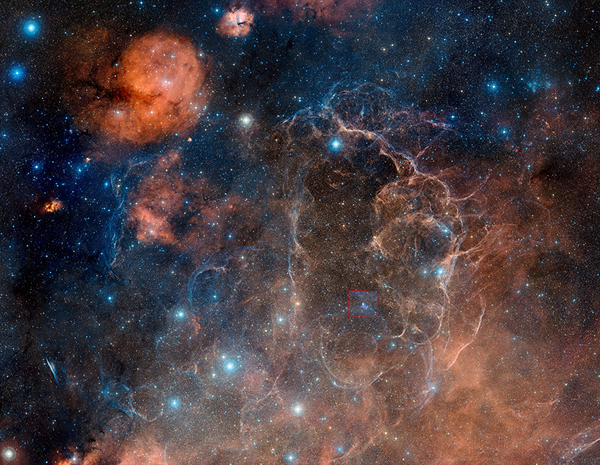
[9/11/2011] Cosmic Crashes Forging Gold

The cosmic site where the heaviest chemical elements such as lead or gold are formed is likely to be identified: Ejected matter from neutron stars merging in a violent collision provides ideal conditions. In detailed numerical simulations, scientists of the Max Planck Institute for Astrophysics (MPA) and of the Free University of Brussels (ULB) have verified that the relevant reactions of atomic nuclei do take place in this environment, producing the heaviest elements in the correct abundances.
- MPA Press release
- Astronomy Picture of the Day
- Stephane Goriely, Andreas Bauswein and Hans-Thomas Janka,
"r-process nucleosynthesis in dynamically ejected matter of neutron star mergers", 2011 ApJ 738 L32 - Astronomy Magazine
- Universe Today
- Astrobiology magazine
- Astronomy Now
- La Recherche, December 2011
[23/6/2011] The flames of Betelgeuse: New image reveals vast nebula around famous supergiant star
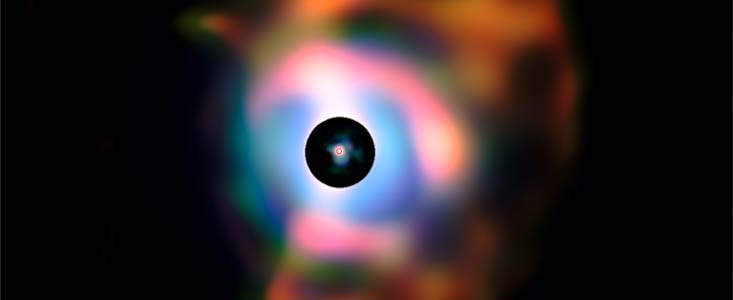
ESO Press release
Astronomy Picture of the Day
[6/6/2011] Nicolas Chamel honoured by the Adolphe Wetrems prize 2011 for Mathematical and Physical Sciences from the Royal Academy of Belgium for his study of extreme conditions in the interiors of supernovae and neutron stars
[22/3/2010] A. Jorissen's & T. Dermine's interview about Printemps des Sciences 2010
- Au quotidien & JT 13h (RTBF La Une)
[1/10/2009] Conspiration between the distributions of dark and visible matter in galaxies
- Nature paper: Universality of galactic surface densities within one dark halo scale-length (Gentile G., Famaey B., Zhao H., Salucci P., Nature 461, 627-628)
- Communiqué de l'ULB
- Le Soir
- Le Monde
[6/3/2009] The new dome is brought to its final location, atop building D
[31/10/2008] B. Famaey discusses dark matter issues with Nobel laureate G. 't Hooft
[6/2007] B. Famaey comments upon Modified Newtonian Dynamics (MOND)
[31/1/2006] Le coté obscur de la force
- ULB press release
- PPARC press release
- Et si on se passait de la matière sombre? (Le Soir, 2/2/2006, C. Du Brulle)
[13/12/2005] L'Etoile mystérieuse (Le Soir, 13/12/2005, C. Du Brulle)
[20/10/2004] ESA's Hipparcos finds rebel stars with a cause: Full story
[22/8/2001] Lead stars:


